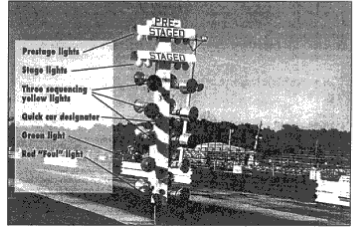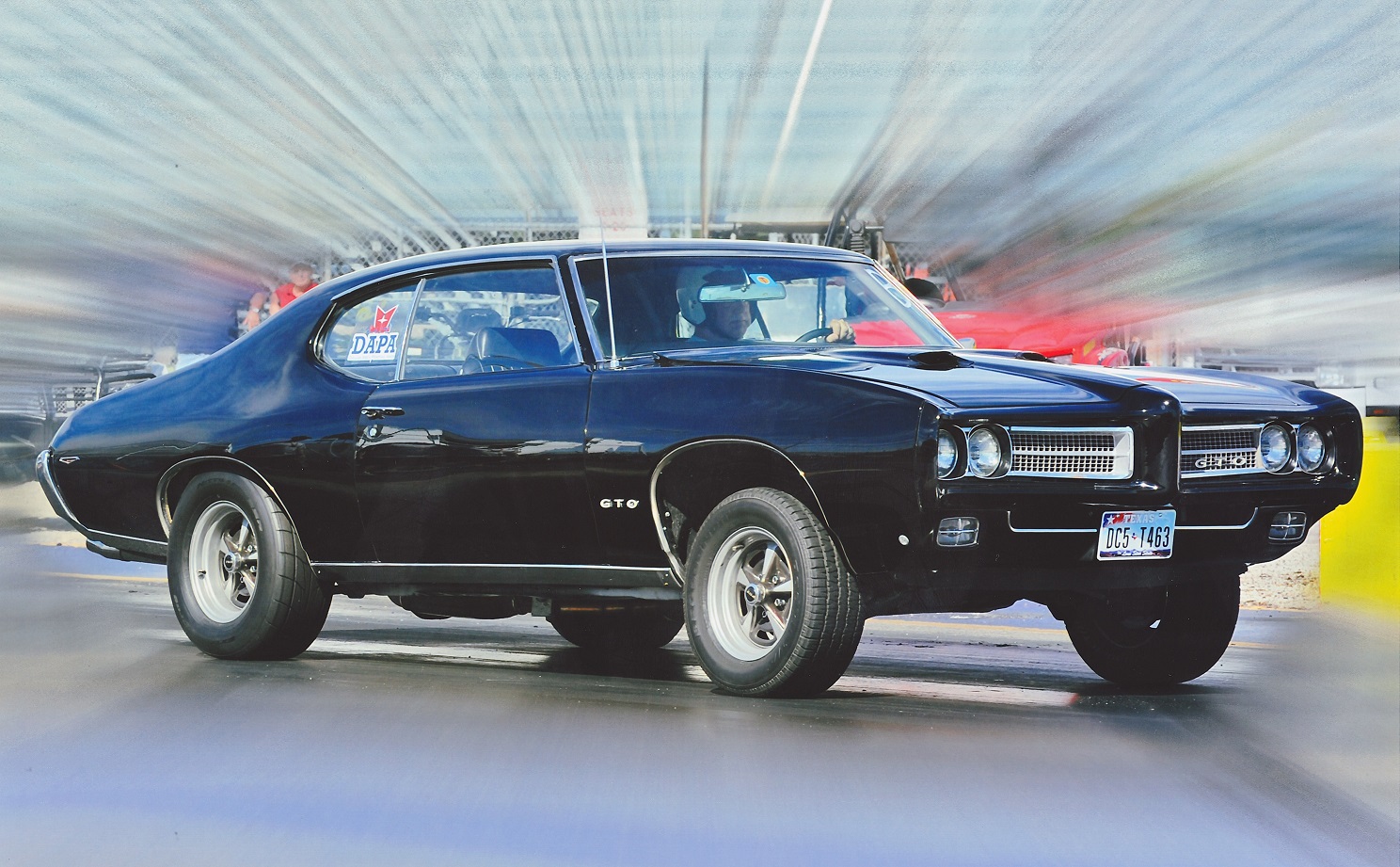Drag Racing with Jim Hand – Part 3: Track Layout
- March 16th, 2010
- Posted in Jim Hand: Drag Racing . Technical Articles
- By D.A.P.A
- Write comment
In the early days of drag racing, an unused open stretch of road, or an unused airstrip was marked with a starting line and a finish line. An observer would be positioned at the finish line to determine the winner. A starter would stand in front of and between the cars and motion them to race with his arms, a flag, or a flashlight. Gradually, forms of communication systems were incorporated to provide winner information back to the starting areas, and PA systems were installed to relay the results to the fans/racers. Crude timing systems, such as stop watches, were used to obtain some performance data. Later, mechanical timers were adapted for Elapsed Time (ET) measurements, and speed measuring equipment was installed at the finish line to report terminal speed as well as elapsed time. In 1962, the automated starting system was introduced. This implemented a degree of fairness and consistency that had been lacking in the manual starting system. As semi-conductor technology became commonplace, advanced timing equipment was developed that provided much additional information to the racers. In addition to the ET and MPH, the time required to accelerate to 60′ was included, and the racer’s “reaction time” (the time from the “start” signal until the vehicle’s front tires left the starting line) was provided. More advanced systems provide 1/8 mile and 1000′ ET and MPH in addition to the above. The newer systems automatically consider red light starts, “Break-Outs” (running quicker than your dial), in addition to who gets there first, in determining the race winner. All of this data is printed out on time slips and given to the racers after each race. In later columns, we will discuss the use of some of these numbers in selecting your dial-in, and in running the next round of elimination’s. We will also discuss reaction time and improving same. Most drag strips now use similar timing and starting systems, so the following discussion generally covers all. Strip layouts vary as to position of pits, direction of track, method of staging race vehicles, separation of fast race cars from slower or driven cars, and rules governing classes. However, most use a “three yellow lights and green light (Go) starting system” known as the “Christmas Tree”, originally developed by Chrondek. The tree also has a tremendously bright red light that comes on if you leave too early. Most also have a “staging”, or positioning system, of two smaller yellow lights that defines the correct location of the car prior to starting the race. Finally, most trees have one additional light that indicates which car is quickest and will leave last during bracket races.
The diagram below illustrates the typical starting system, or “tree”. Note that the two sides are identical, so the following explanation applies to each. The top light (“Pre-stage”) is activated by the breaking of a light beam approximately 6″ behind the starting line by the race vehicle’s front tire/wheel as the vehicle rolls closer to the starting line. The second light from the top (“stage”) is also activated by the front tire/wheel as the vehicle rolls closer to the starting line. (The actual distance between the two beams is set prior to a race by checking the “rollout” with a specified roller device in order to compensate for the different widths of light beams in use.) At this point, when both the pre-stage and stage lights are on, the vehicle is “staged” and the starting sequence can be activated. It is obvious that the front tire/wheel could be at a location between, slightly behind, or slightly ahead of the two lights due to different diameter tire/wheels, but if both are broken, the vehicle is still correctly staged.
A typical starting system or “tree”.
There are various techniques of staging preferred by racers, but until we discuss this further in another column, I recommend you drive forward only until both prestage and stage lights turn on. Stopping at the position the stage light just comes on will improve your consistency in both reaction time and ET, and will provide the quickest ET. The “starter”, who watches over the previous race, the staging process, and general safety, activates the starting tree by operating a hand held control box. When he sees both vehicles are properly staged and the track is clear, he starts the tree sequence. The first large yellow (third lamp down) lights, .5 seconds later, the second large yellow lights, .5 seconds later, the third large yellow lights, and .5 seconds later, the green lights. If either vehicle leaves the front light beam (starting line) prior to the closure of the switch for the green light, the system detects the “foul” and turns on the big “RED” (bottom light). Note the reference to the green light switch closure. A perfect “light” or reaction time is .0 or .500, depending on how the local system prints out. In either case, a perfect light occurs when the tire leaves the starting line exactly when the green light switch closes. It takes some time for any bulb to illuminate after current begins to flow in the filament, and if you wait to see the green light before accelerating (“leaving”), your reaction time will be poor. More on this in later columns.
The finish line is equipped with a light beam across each lane. After a normal starting sequence by the racer and starting system, this light beam, in conjunction with the system timer and the starting line beam, will provide the actual elapsed time the vehicle was between the start and finish lines (ET). In addition, a light beam for each lane is located 100′ before the finish line. The system timer measures the time the vehicle is in that last 100′ and converts the time/ distance to speed in MPH. So we don’t get exact MPH at the finish line but an average speed for the last 100.
Some tracks use a different starting sequence for the very quick vehicles. It is called a “Pro” tree (or “.4 tree”) and normally operates as follows: The vehicles stage as noted above, but instead of the three large yellow lights sequencing down in discrete steps, they all flash together and .4 seconds later, the green comes on. This starting system tends to minimize red light starts. This system is mentioned only for information, and you should never have to drive with this starting system.
It is suggested you make a trip to your local track to review the track layout, and to observe the starting system for any variations from that described above.



